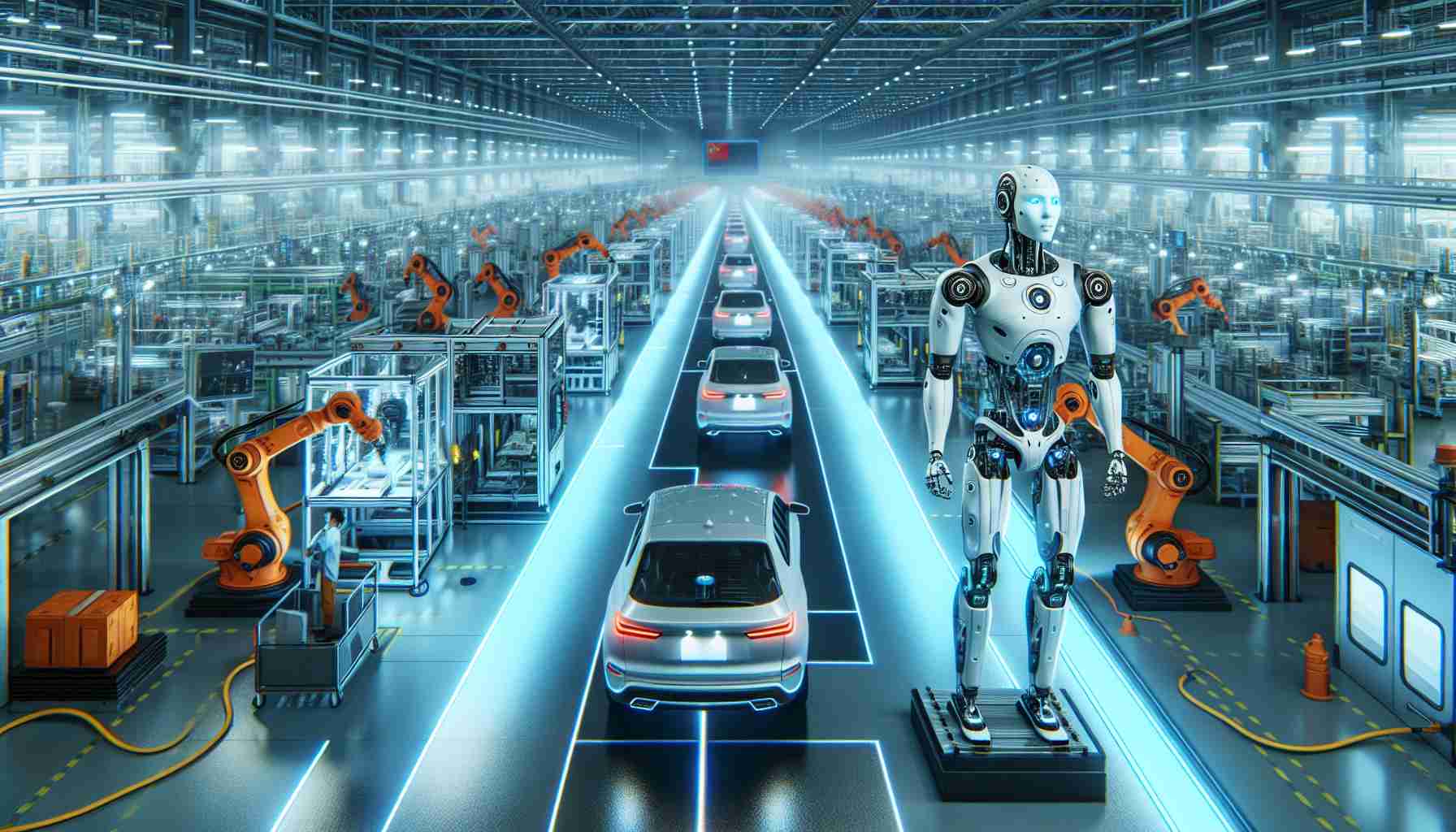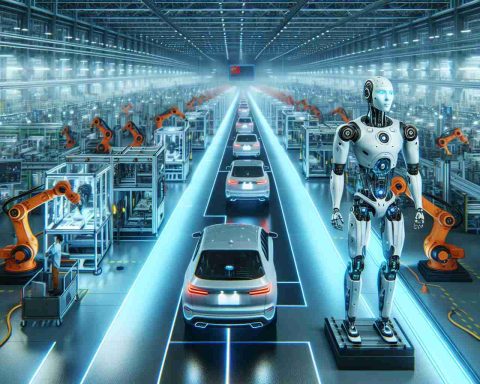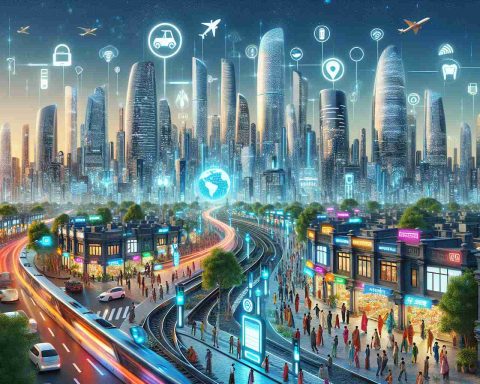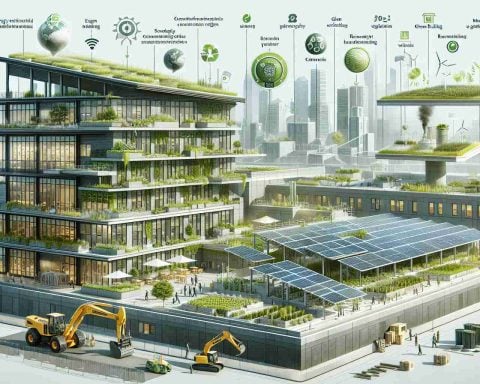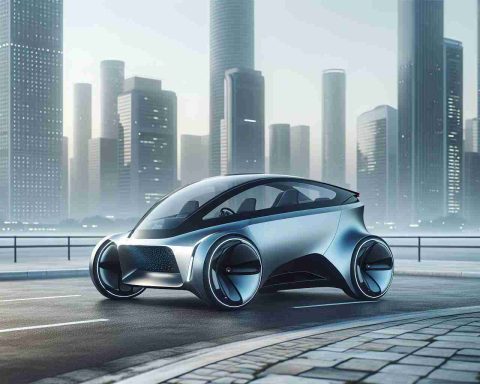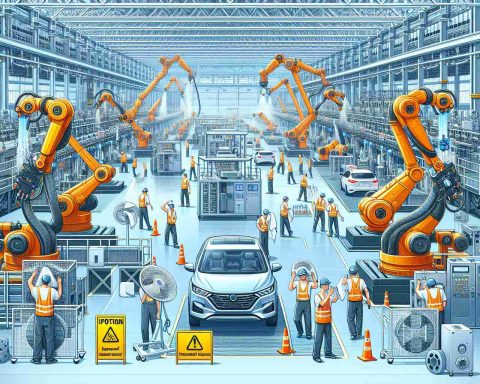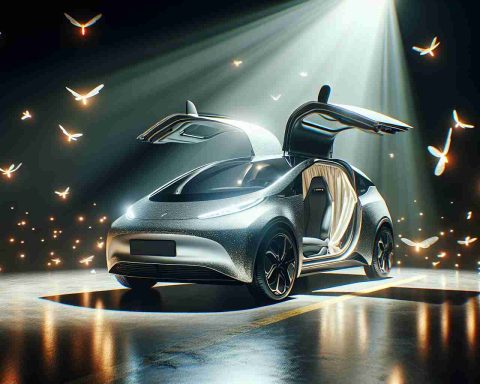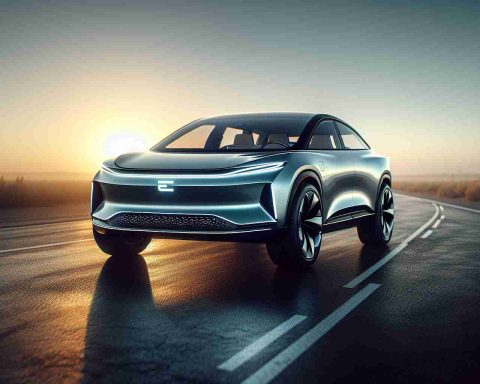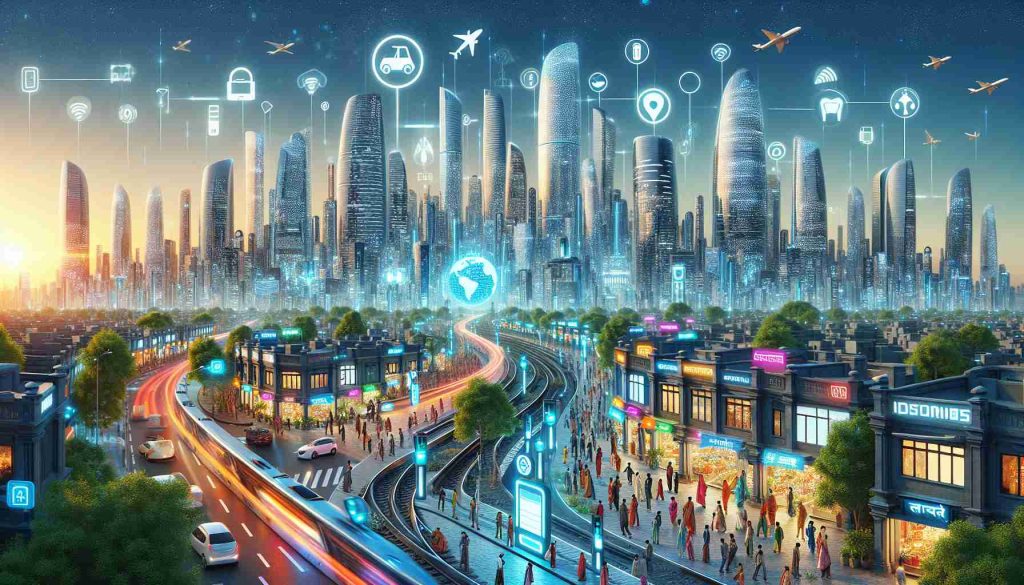- The 2025 CCTV New Year Gala featured 16 humanoid robots performing the traditional Yangko dance, embodying China’s technological advancements.
- China’s electric vehicle (EV) giants like BYD, XPeng, and Nio are pivoting towards humanoid robotics, leveraging existing supply chains and technology.
- Humanoid robots are now playing roles in factory operations, using advanced AI, sensors, lidar, and battery technologies adapted from EVs.
- Collaborations between carmakers and robotics firms are restructuring industrial capabilities, supported by China’s substantial supply chain and government initiatives.
- This shift marks China’s continued pursuit of technological leadership, symbolizing a broader industrial transformation.
A billion pairs of eyes focused on the glistening stage at the 2025 CCTV New Year Gala, where 16 humanoid robots mesmerized audiences as they twirled red handkerchiefs with agile precision. Clad in vibrant floral jackets, these mechanical performers echoed the synchronized grace of the Yangko dance, a cherished tradition of northeastern China. But far from mere entertainers, these robots symbolize a seismic shift within China’s tech landscape—a new chapter in the country’s industrial revolution, fueled by its formidable electric vehicle (EV) giants.
Emerging from the turbulent battleground of the EV market, where once-numerous companies have dwindled amidst fierce competition, major players like BYD, XPeng, and Nio are pivoting to humanoid robotics. As the EV market consolidates, these companies are leveraging their established supply chains and technological prowess to delve into a burgeoning field. Driven by both the pursuit of novel narratives to pique investor interest and the imperative of cost reduction, the transition is spearheaded by the very essence of modern engineering—innovation.
Partnerships between carmakers and robotics firms are redefining factory floors. Blessed with the ability to perceive and interact with their environment through advanced sensors and AI algorithms, these humanoid machines are stepping into roles as diverse as installing wires in cars and navigating complex factory terrains. Companies like GAC and XPeng are harnessing technologies initially crafted for vehicles, like lidar and advanced batteries, to power this robotic renaissance. Meanwhile, China’s massive supply chain infrastructure and government-backed initiatives further bolster this automated ambition, positioning the nation once again at the forefront of global industrial transformation.
The evolution from EV to robotics signifies more than just a shift in machinery—it’s a testament to China’s relentless drive toward technological leadership. With the world watching, these automated dancers are more than just performers; they are harbingers of a future where innovation leads the dance.
Will Humanoid Robots Be the Future Workforce? Discover How China’s EV Giants Are Pioneering a New Era
How Humanoid Robots Are Reshaping the Industrial Landscape
Humanoid robots are rapidly becoming more than just fascinating performers or futuristic concepts. With their intricate design, these robots—enhanced with advanced AI, sensors, and hardware—are being integrated into various industrial processes, particularly by leading electric vehicle (EV) companies in China such as BYD, XPeng, and Nio. This strategic pivot reflects an emerging trend wherein industries are leveraging their technological capabilities developed from the EV sector to revolutionize robotic applications.
Real-World Use Cases in Factories
1. Automotive Assembly Lines: Humanoid robots are starting to perform tasks such as installation of wiring systems, welding, and quality inspection. These tasks, traditionally handled by humans, are now increasingly automated, improving speed and precision.
2. Logistics and Supply Chain: With their ability to navigate complex environments, equipped with lidar and AI, humanoid robots manage inventory and move materials in warehouses without interruptions, optimizing logistical operations.
3. Healthcare and Service Industries: Beyond industrial settings, humanoid robots are envisaged to provide assistance in healthcare and customer service, through roles such as patient care, visitor guidance, and even companionship.
Market Forecasts & Industry Trends
According to a report by MarketsandMarkets, the humanoid robot market size is projected to grow from USD 1.5 billion in 2020 to 4.3 billion by 2025, at a CAGR of 23.3% during the forecast period. This significant growth is largely fueled by advancements in AI and sensory technologies, coupled with increasing investments from major tech companies.
Reviews & Comparisons
When looking at specific models, companies like ABB, Boston Dynamics, and even Tesla with their Optimus project, provide points of comparison. While ABB focuses on collaborative robots for industrial tasks, Boston Dynamics offers robots with agility highlights suitable for dynamic environments. Evaluating them against the automotive-rooted humanoids from China reveals fascinating differences in design and application scope.
Controversies & Limitations
1. Job Displacement: A major concern is the potential displacement of human jobs by robotic systems. The ethical and societal impact of automating previously human-held roles is a topic of ongoing debate.
2. Technological Limitations: Current robots still face challenges in performing tasks that require nuanced human-like dexterity or emotional intelligence.
Features, Specs & Pricing
The specifics of these robots often include:
– Sensors: Advanced lidar, cameras, and acoustic sensors for environment interaction.
– AI: Machine learning algorithms for improved decision-making.
– Power: Efficient energy systems using innovations borrowed from EV battery technology.
Pricing will depend heavily on the robots’ functionalities and capabilities, ranging widely from tens of thousands to several hundreds of thousands of dollars.
Security & Sustainability
Ensuring the secure operation of humanoid robots involves safeguarding against cyber threats, given their potential to handle sensitive tasks. Additionally, as many components are derived from EV technologies, there’s a strong emphasis on sustainable manufacturing processes.
Pros & Cons Overview
Pros:
– Enhanced efficiency and precision in industrial setups.
– Reduction in human error and labor costs.
Cons:
– Potential for job displacement in traditional industries.
– High initial costs and technical barriers to implementation.
Quick Tips for Businesses Considering Humanoid Robots
1. Evaluate Specific Needs: Determine how humanoid robots could specifically address your company’s operational challenges.
2. Start Small: Start with pilot projects to validate the potential benefits and refine integration processes.
3. Focus on Training: Prepare your workforce for shifts in roles and collaborate towards a future-ready skillset.
The transition from EV manufacturing to robotics indicates a broader shift in global industry trends. As the world embraces more automation, businesses must stay informed and adaptable. For further insights into how robotics is changing industries, visit BYD or Nio for the latest advancements.
